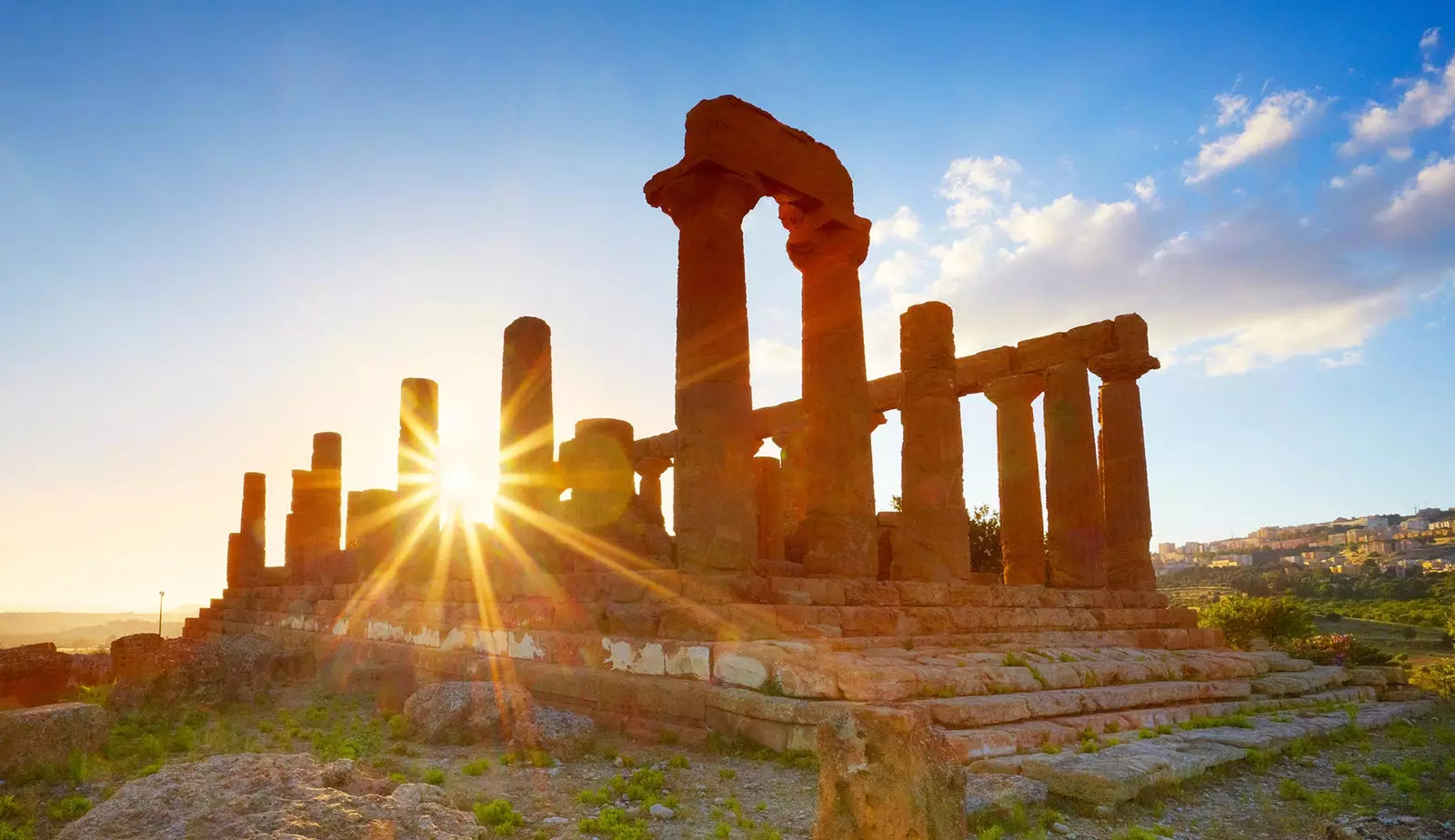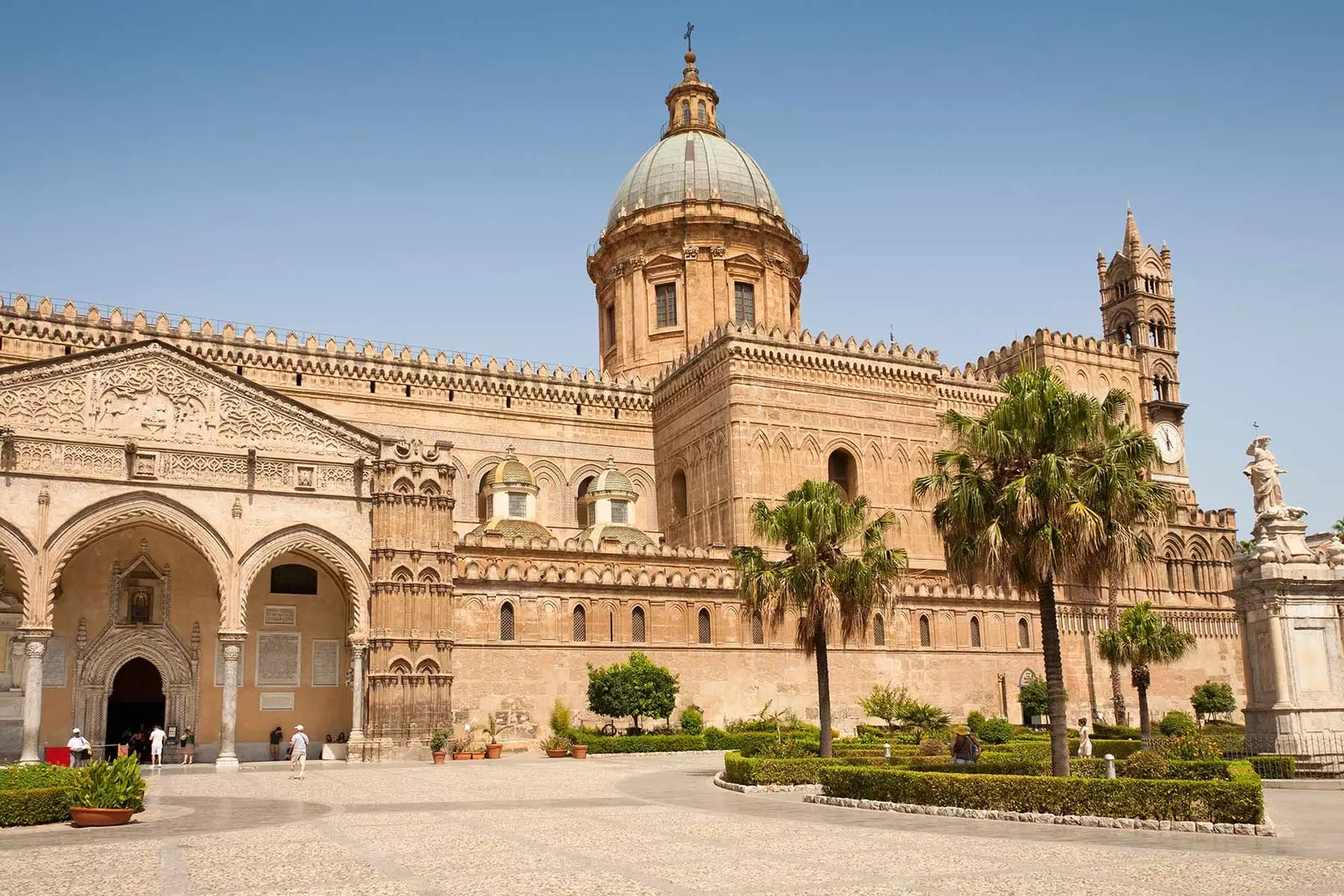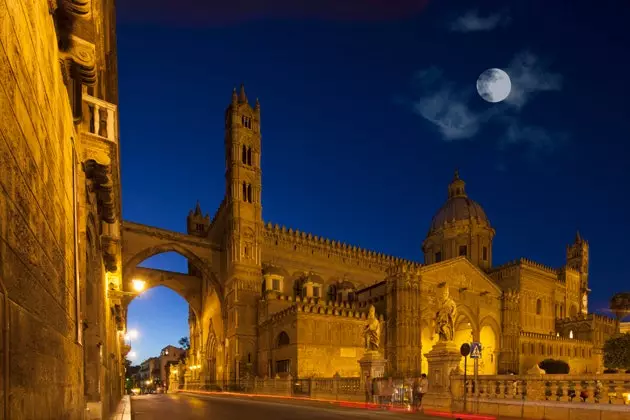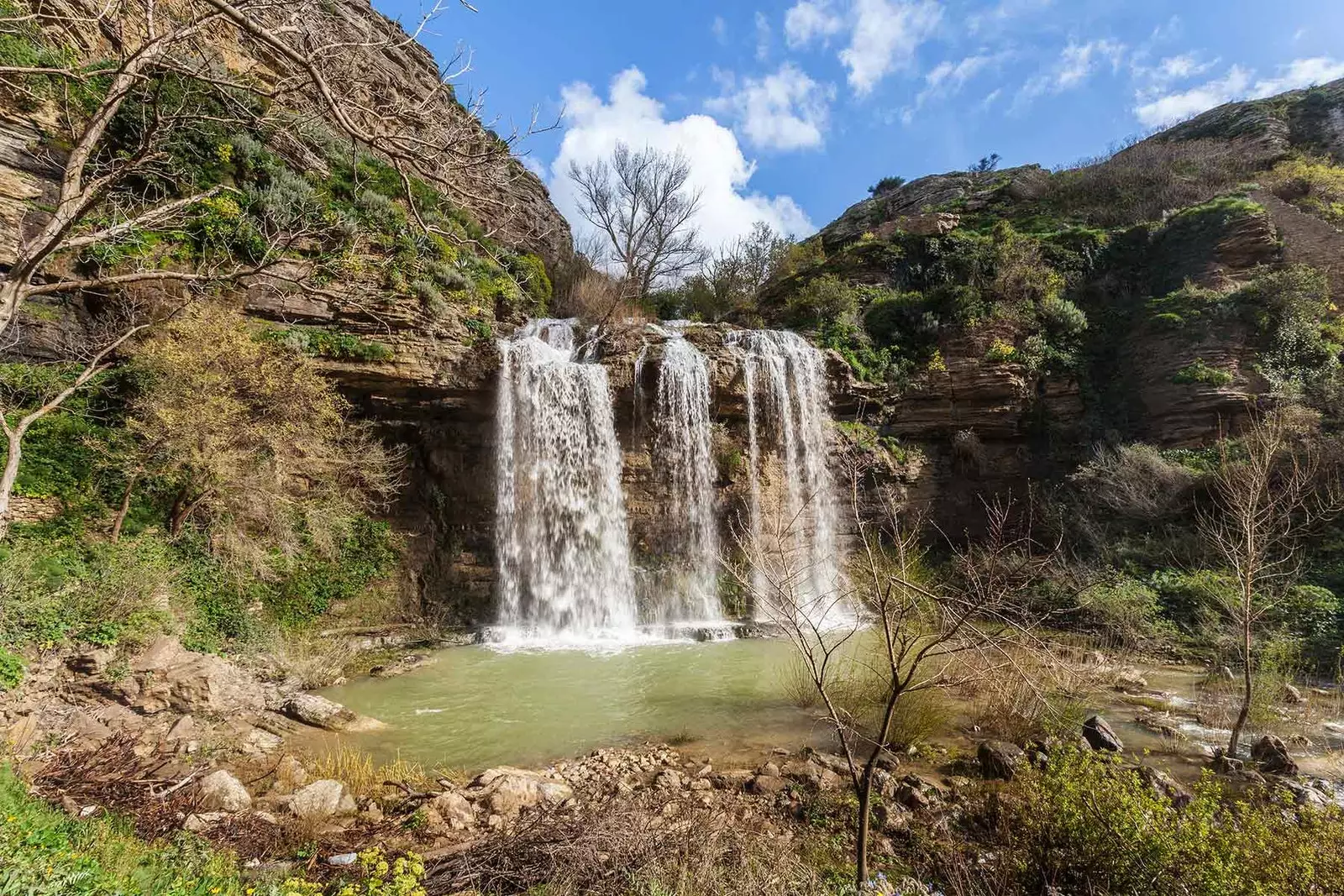
Your journey will end in the Valley of the Temples, near Agrigento, in southern Sicily
After centuries of neglect, the Municipality of Castronovo di Sicilia , the 13 municipalities that are part of the route, the Diocese of Agrigento, the Amici dei Cammini Francigeni di Sicilia Association, the Italian Ministry of Culture and the Ministry of Tourism, Sports and Entertainment of Sicily have decided to recover this suggestive path that reveals us the Sicily of the inland towns and rural pearls.
The Magna Via Francigena , called 'magnam' due to its importance and grandeur, and 'French' (francigenam) due to its Norman origin, was inaugurated last June. This route used to allow the connection between the main ports and the big cities, Palermo was the gateway to Catalan and Aragonese Spain and to Italy, Mazara del Vallo and Agrigento connected Sicily with North Africa and Messina was the link with Central Africa, the East and the Holy Land.

Palermo Cathedral
Pilgrims but also tourists, hikers, athletes, ethnologists and lovers of Romanesque churches You will thus be able to learn about the Norman past of this Mediterranean island and its relationship with Arab and Muslim culture. And if you think that you are not trained enough to cover the entire route, you can choose only some of the nine stages that make it up, between 20 and 22 kilometers each.
Palermo, Piana Albanesi, Santa Cristina Gela, Corleone, Prizzi, Castronovo di Sicilia, Cammarata, Fiume Platani, Sutera, Grotte, Joppolo Giancaxio and Agrigento are the 12 stops that make up the Magna Via Francigena and all of them have shelters, youth hostels, Bed and Breakfasts, as well as hotels and rural houses.
They will be easily recognizable along the route and are all cataloged in the official website of the road. Always on the website, the points where you can stop to eat are indicated for each route. In addition, thanks to an app (available on iOS and Android) you will be able to know more details about the history of the places and the archaeological sites that you will be visiting.
As with the Compostela, the pilgrim who presents the hiker's credential sealed is granted the testimonial , a document that certifies the pilgrimage 'devotionis causa'. In addition, the pilgrims who will have traveled at least 100 kilometers of the Cammini Francigeni di Sicilia will be entitled to the Testimonium dedicated to the Virgin Hodegetria, the Virgin of the Good Path.
MONUMENTS AND LANDSCAPES OF THE SICILIAN WAY
The first stage of the Magna Via Francigena starts with a visit to the Cathedral of Palermo , built by the Normans on a pre-existing Muslim place of worship. In addition, not far from there we can see some examples of Palermo architecture from medieval times, in which Byzantine influences, the French culture of the Normans and Muslim art converge: the church of the Admiral, San Cataldo, the bridge of the Admiral, the Palatine Chapel and the Palace of the Normans.
After passing under Porta Nuova and walking along Corso Calatafimi, we are about to walk about seven kilometers slightly uphill through the south-west of the city until reaching the slopes of Monreale and its beautiful cathedral, established as a royal diocese by the King William II the Good . Its spectacular Byzantine mosaics will leave you speechless, as will the attractive places in the second stage, which goes from Saint Christina Gela to Corleone.

Palermo, you always have to come back
Here we can see from a necropolis of Roman Hellenistic age with ceramic remains of Byzantine origin to a path of transhumance still used by shepherds, passing through the Nicolosi Palace and Rocca Argenteria plateaus, privileged places for geology enthusiasts, and the native of Gorgo del Drago , a series of ponds and rock falls dug out by the tributary of the Left Belize River.
From here the RT28 takes us to Corleone, but not to the Corleone of the clichés but to the town of the hundred baroque churches and the waterfalls . It is essential to visit the Archaeological Museum, which houses the milarius of the Roman road and the CIDMA (International Documentation Center on the Mafia of the Antimafia Movement).

The waterfalls of Corleone
Nature in its maximum splendor stars in the route that goes from Prizzi to Castronovo of Sicily , where we can admire **the nature reserve facing Monte Carcaci** and the area of Saint Catherine , green lungs of the Parque de los Montes. Among the immense extensions of wheat, we find various rest areas and we can take advantage of it to refuel energy.
With the batteries charged we walk a few kilometers towards the town Queen's Villa , an abandoned farming village where life stopped a century ago; and continue our way to the archaeological zone of the cassar , where it is possible to see up close precious remains of the Byzantine past of this place.
the heart of the Magna Via Francigena it is just from there. After walking about a kilometer we ran into the Capelvenere Necropolis , a large rock excavated to accommodate tombs and reused over the centuries also for residential purposes and not far from there, with a stream, ideal for soaking your feet in summer.
Then we reach the most impressive archaeological control site of the entire road: the House of San Pietro , which probably keeps in the subsoil the memory of the Islamic settlement that arose around the Casale, as mentioned in some Norman documents.
The next stage, Sutera-Racalmuto/Grotte , is the longest of the entire route (about 22 kilometers) and includes many of the urban centers that are part of the route. Among all of them, we highlight Racalmuto, the birthplace of the writer Leonardo Sciascia. The Chiaramontano castle, the Fountain of “Novi Cannola”, the Mother Church and that of San Francisco are some of the artistic and architectural jewels that you should not overlook during your walk through this town.
after leaving racalmuto Y the farming village of Grotte We head towards the Petra di Calathansuderj archaeological site, which preserves the Arabic toponym, and the Comitini mining district. We continue along the SS (state highway) 189 until we reach Aragon , we take the opportunity to make a technical stop, without stopping visiting the baroque churches in the area and finally we go to Joppolo Giancaxio , the last town on the road before the final goal.
From there we go through several cultivated fields until we reach a road that leads us - after crossing to the left towards the Akragas stream - to the city of Agrigento , under Cathedral Rock. It already smells of the sea, of the Mediterranean Sea, that sea that bathes the long 'Pirandellian' beaches.
With this picture we say goodbye to the road, but not before visiting the Valley of the Temples , UNESCO World Heritage Site.
Il cammino di Sicilia - Magna Via Francigena from AVENIR Video & Photography on Vimeo .
